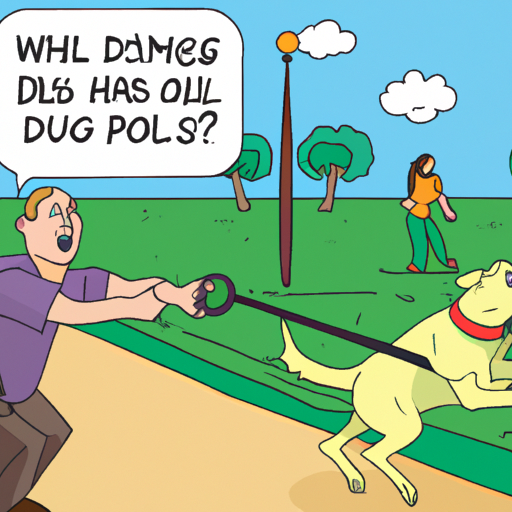Why Your Dog Might Be Pulling on Their Leash
Understanding why your dog pulls on the leash is the first step towards solving the problem. There are several reasons why your dog might be pulling on the leash.
- Exercise: Dogs, especially high-energy breeds, need exercise. If they don’t get enough, they may use walks as an opportunity to burn off energy by pulling on the leash.
- Excitement: Walks are exciting. There are so many smells and sights to explore. Your dog may pull on the leash purely out of excitement and the desire to see everything.
- Hunting Instinct: Some dogs have a strong hunting instinct and pull on the leash to chase after squirrels, birds, or other animals.
- Lack of Training: If your dog hasn’t been trained to walk on a leash, they won’t understand that they’re not supposed to pull.
How to Discourage Leash Pulling
Now that you understand why your dog might be pulling on their leash, let’s discuss what can be done to discourage this behavior.
- Training: Start by teaching your dog the “heel” command. This will instruct them to stay by your side during walks.
- Equipment: Use a no-pull harness or head collar. These tools can help you manage your dog’s pulling and make walks more enjoyable.
- Consistency: Be consistent in your training. If your dog pulls, stop walking immediately. Only continue when the leash is slack again.
Keep in mind that this is a process. Don’t expect immediate results.
Effective Training Techniques
Training your dog not to pull on their leash can be challenging, but with perseverance and the right techniques, you can achieve positive results.
| Techniques | Description |
|---|---|
| Reward-Based | Reward your dog when they walk without pulling. This could be with treats, praise, or anything else your dog loves. |
| Redirection | If your dog starts to pull, redirect their attention back to you. Use a command, a treat, or a toy to grab their focus. |
| Penalty Yards | If your dog pulls, turn around and walk in the opposite direction. This teaches them that pulling gets them nowhere. |
Common Mistakes to Avoid
Avoid these common mistakes when training your dog not to pull on the leash.
- Allowing Pulling: If you allow your dog to pull sometimes, they will think it’s acceptable behavior.
- Too Much Slack: Giving your dog too much slack on the leash can encourage pulling. Keep the leash short but not tight.
- Inconsistent Commands: Use consistent commands and signals. Changing commands can confuse your dog.
FAQ
Q: How long will it take to train my dog not to pull on the leash?
A: It depends on the dog and the consistency of the training. It could take a few weeks to a few months.
Q: Can I train an older dog not to pull on the leash?
A: Yes, dogs of any age can be trained not to pull on the leash.
Q: What if my dog is still pulling on the leash despite training?
A: Consider working with a professional dog trainer. They can provide additional help and guidance.
Remember, patience and consistency are key when it comes to training your dog not to pull on the leash. With time and effort, you can enjoy peaceful, enjoyable walks with your furry friend.



